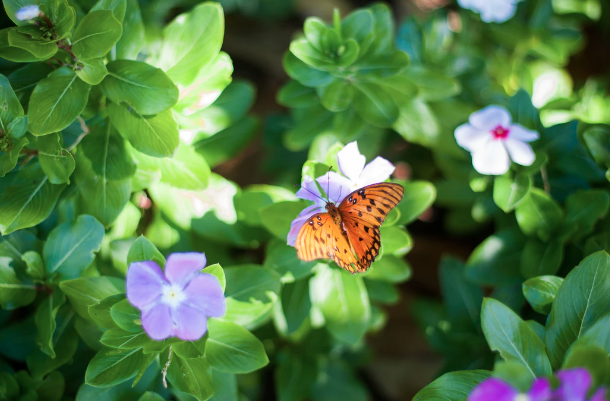As we finally welcome spring and begin planning the coming year’s gardening work, it’s important to also keep the protection of nature and local wildlife in mind. Gardening can be a great form of stress relief while also adding natural beauty to your home. However, gardeners need to be aware of the impacts certain choices can have on the local flora and fauna.
From attracting pollinators and other beneficial bugs to avoiding harmful chemicals, there are a variety of ways to keep your gardening practices environmentally-safe while also creating the outdoor space of your dreams.
Avoid Quick Killers
Now the frost has thawed and any snow that was left on the ground has melted away, you’ve likely noticed the first blooms of spring throughout your neighborhood. Of course, this also means the weeds in your yard are making their grand return as well. While it can be tempting to grab a bottle of weed killer or pest control, the chemicals in these products can be devastating to local wildlife and plants. Yes, they can make removing weeds or pests easier, but the unethical ingredients found in many household products and pesticides can have serious consequences for the planet that just aren’t worth the convenience.
These chemicals can easily enter waterways that local wildlife (and humans) utilize, poisoning them along with any flora nearby as well. If it’s powerful enough to kill weeds easily, just imagine what it can do to other living creatures. Instead of relying on chemicals, look for ways to prevent the weeds or pests from popping up in the first place. If your soil has some deficiency this can lead to more weeds sprouting up. Keeping your soil healthy, moist, and well-balanced will keep a lot of weeds out of your yard. There are also organic herbicides such as clove oil or vinegar that can be used to rid your garden of weeds and other unwanted guests. And of course, you can never go wrong with the classic hand-picking method, which can actually have several additional benefits to your garden.
A Pollinator’s Paradise
Now that you’ve found a better way to show uninvited guests the door, the next step is finding a way to attract those you do want in your garden — pollinators. Pollinators are vital to the planet’s entire ecosystem, so they’re a great addition to have in your garden. Depending on the area of Maryland you live in, designing your garden space to include native plants that fit your region is key in attracting those good bugs.
Maryland is divided into three types of eco-regions: mountain, coastal plain, and piedmont plateau. While there are plants that can be found throughout all three regions, like butterfly milkweed, there are some found in only specific areas. For example, marsh marigolds belong to the coastal plain and mountain regions and wild bleeding hearts prefer the piedmont area. After finding native plants that fit your region look for host plants such as parsley, fennel, or dill to help with pollinator reproduction, life cycle completion, and also provide winter shelter. It’s also recommended to design gardens with a variety of colors, shapes, and heights of plants to provide enough nectar and of course, pollen.
Lend a Helping Hand
Another consideration for your garden this year, that many can overlook, is how to keep birds safe from injury. Many of us know that windows and sliding glass doors can be dangerous for birds, often leading to serious or even fatal injuries for them. Birds are not only a joy to watch and observe but many species are vital to the health of our ecosystems. Moreover, birds are a great form of natural pest control, and certain birds like sparrows and finches even consume weed seeds meaning less hassle for you.
While you may have heard of the paper bird taped on the window tactic, did you know you can also plant bushes, shrubs, and trees to break up the reflection of windows? This is a great solution to a couple of problems. Certain bushes, such as the Buttonbush, are great for pollinators. Shrubs and the like can also help fill in any awkward empty spaces within your layout. Another way to prevent birds from crashing into their reflection is by moving any indoor plants you have away from windows as much as possible. And if you’re trying to attract more birds to help your garden thrive, it’s imperative to place all bird feeds and baths at least 30 feet away from your home to avoid injury.
After winter’s cold stay, gardening is always the perfect excuse to get outside and start enjoying the beginnings of spring. As you get started on your gardening plans this year though, consider how you can nurture and protect the natural world around you. You’ll not only have a beautiful garden you can be proud of but Mother Nature will greatly appreciate your efforts.

Bio: Indiana Lee lives in the Pacific Northwest and has a passion for the environment and wellness. She draws her inspiration from nature and makes sure to explore the outdoors regularly with her family and two dogs. Indiana also has experience in owning and operating her own business. Feel free to follow her on Twitter @indianalee3.

